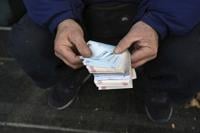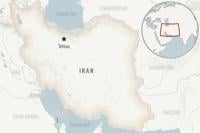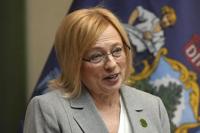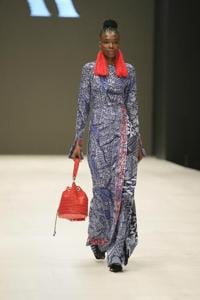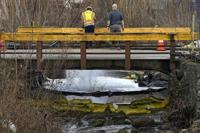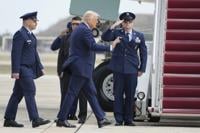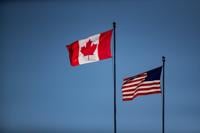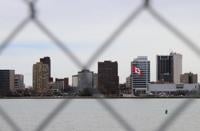TEHRAN, Iran (AP) — Iran ’s rial currency traded Saturday at a record low against the U.S. dollar as the country returned to work after a long holiday, costing over 1 million rials for a single greenback as tensions between Tehran and Washington likely will push it even lower.
The exchange rate had plunged to over 1 million rials during the Persian New Year, Nowruz, as currency shops closed and only informal trading took place on the streets, creating additional pressure on the market. But as traders resumed work Saturday, the rate fell even further to 1,043,000 to the dollar, signaling the new low appeared here to stay.
On Ferdowsi Street in Iran’s capital, Tehran, the heart of the country’s money exchanges, some traders even switched off their electronic signs showing the going rate as uncertainty loomed over how much further the rial could drop.
“We turn it off since we are not sure about the successive changes of the rate,” said Reza Sharifi, who works at one exchange.
Tensions with US squeeze the rial
Iran’s economy has been severely affected by international sanctions, particularly after U.S. President Donald Trump unilaterally withdrew America from Tehran’s nuclear deal with world powers in 2018. At the time of the 2015 deal, which saw Iran drastically limit its enrichment and stockpiling of uranium in exchange for lifting of international sanctions, the rial traded at 32,000 to the dollar.
After Trump returned to the White House for his second term in January, he restarted his so-called “maximum pressure” campaign targeting Tehran with sanctions. He again went after firms trading Iranian crude oil, including those selling at a discount in China.
, trying to jumpstart direct talks between Tehran and Washington. So far, , but such discussions under the Biden administration failed to make headway.
Meanwhile, Trump is continuing , the last force in Tehran’s self-described “Axis of Resistance” able to attack Israel after other militant groups were mauled by Israel during its war on Hamas in the Gaza Strip.
Mehdi Darabi, a market analyst, said he believed that foreign pressures in recent months caused “expectations for the possibility of a decrease in oil sales and more inflation, and it caused a higher rate for hard currencies,” according to Tehran’s Donay-e-Eqtesad economic newspaper.
Economic pressure inflames Iranian public and politics
Economic upheavals have evaporated the public’s savings, pushing average Iranians into holding onto hard currencies, gold, cars and other tangible wealth. or fall into get-rich-quick schemes.
Meanwhile, internal political pressure remains inflamed still over the mandatory hijab, or headscarf, with women still ignoring the law on the streets of Tehran. Rumors also persist over the government potentially increasing the cost of subsidized gasoline in the country, which has sparked nationwide protests in the past.
The falling rial has put more pressure as well on Iranian reformist . In March, when the rate was 930,000 rials to the dollar, Iran’s parliament impeached his finance minister, over the crashing rial and .
Anger over government spending also saw Pezeshkian fire his vice president in charge of parliamentary affairs, Shahram Dabiri, for taking a luxury cruise to Antarctica, state media reported. Though Dabiri reportedly used his own money for the trip with his wife, the Instagram photos posted of his trip angered an Iranian public scrapping by to survive.
“In a situation where the economic pressures on people are huge and the number of deprived people is massive, expensive recreational trip by officials even by their own personal fund is not defendable and reasonable,” Pezeshkian said in firing Dabiri, who so far hasn’t offered any public explanation for his trip.
___
Gambrell reported from Dubai, United Arab Emirates.


